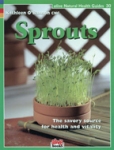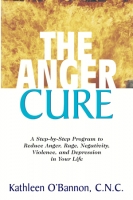Think of your body as a machine. If you give it the correct fuel it will run smoothly. If you give it incorrect fuel or eat at the wrong times, it will not run smoothly. It’s that simple!
Your body runs on the fuel called ‘blood sugar’. Blood sugar comes from food, real food not caffeine, sugar, or alcohol. To keep your energy stable and balanced you have to give your body fuel at frequent intervals or it will get out of balance even cause binge eating.
When you sleep all night you aren’t feeding your body so it is like a mini fast. That’s why the first meal of the day has traditionally been called ‘break the fast’ which we have shortened to breakfast. Yes, people used to eat breakfast first thing in the morning.
Now, however, times have changed and many people are not even eating breakfast let alone first thing in the morning. This can cause an energy problem all day.
I like to call it ‘the first half hour.’ This is the most important time of the day to prevent binge eating and overeating all day long. It’s the best time to gain self-control. You can do that by eating something in the first half hour of getting up. Why?
When you don’t eat your blood sugar drops; that’s the mini fast that happens while you sleep. When your blood sugar is low you will have no self-control. By eating first thing in the morning you can raise your blood sugar levels and get a great start to the day. It doesn’t take much a hard-boiled egg, a spoonful of cashew or almond butter, some celery sticks with peanut butter on them, a piece of real cheese not processed cheese food, a quarter of an apple or orange with some nuts or cheese, leftover meat or tofu from the night before. It must not be wheat, items containing sugar, caffeinated beverages, or tobacco. Part of a puffed rice cracker well chewed is also fine with a little protein with it. Protein is the key to stabilizing your blood sugar. Then exercise and eat breakfast.
If you don’t eat first thing or if you have sugary foods, wheat products, caffeine, or tobacco you can set yourself up for a day of blood sugar spikes up and down. When your blood sugar drops or if it is up and down all day, you might have allergies, anxiety, confusion, poor concentration, depression, crying spells, insomnia, headaches, lack of sex drive, weak spells, leg cramps, nightmares, fears, and anger. The list is long of the ways going without eating can create health issues for you; this is just a partial list. But one of the most interesting is that you will have no self-control. You won’t know when to stop eating and you won’t be able to pick healthy food.
Going without eating breakfast can create binge eating later on in the day. Once you set up the cycle of your blood sugar dropping and going up and down all day you will want to eat something to raise your blood sugar, and eat, and eat. Yep out of control eating. Or you might grab a caffeinated drink, something with sugar or wheat and sugar, alcohol, or even gum, something that will bring up your blood sugar right away and stop the pain or emotions that are out of hand. Unfortunately that will be a temporary fix and your blood sugar will come crashing down in an hour or so and you will once again reach for caffeine, nicotine, or a sugary or high carbohydrate snack or perhaps binge eat.
The real cure is not medication; it is eating within the first half hour of getting up. I suggest you eat a little something as described above, do some exercise, and then have breakfast. That will balance or stabilize your energy levels. Even a liquid protein drink is fine as long as it doesn’t have sugar or HFC (high fructose corn sugar or syrup) in it. If you don’t exercise then just eat breakfast. I hope you don’t skip exercise; it can bring up your blood sugar levels and keep you fit.
The ideal lifestyle would be to get up in the morning and have a small snack, exercise for an hour, eat breakfast and go about your day. Then have a small snack every 2-4 hours. Avoid caffeine, nicotine, and foods with sugar and/or wheat in them. Learn to carry a small packet of nuts and seeds with you. Pumpkin or sunflower seeds are especially good so are almonds and Brazil nuts. If you carry snacks you will always have something handy to eat to keep your blood sugar balanced. It is especially important for people of all ages to eat to balance their energy.
For snacks I like to have leaf lettuce spread with cashew butter and rolled up, individual cheese sticks, or part of an apple and 5 or 6 almonds. Baby carrot sticks are fine but can be sweet so eat some protein with them. All vegetables can serve as a snack: zucchini sticks, slices of red or yellow pepper, lightly steamed broccoli or cauliflower. I have a friend who eats beets as a snack. The first time I saw him eating a beet like it was an apple I was really taken aback, but I got used to it and now suggest it, with a bit of protein of course since beets can be sweet. Beets are in some of the supplements holistic practitioners suggest to clients to help with blood sugar problems.
Many so-called diseases are the result of having blood sugar out of balance. Epilepsy type episodes, crying spells, depression, even agoraphobia. I had a client once who was so fearful of going out she was bed ridden and on anxiety drugs. She got an alarm clock and plates of snacks and kept them by her bed. Every 2 hours she had a bite or two of the snack and set the alarm to wake her to eat the snack in another 2 hours. The next day she was up and out and going shopping at the mall, something she hadn’t done in many months.
If you want more specific instructions you can find them in The Anger Cure book. There are also questionnaires to fill in to assess if you have a blood sugar problem. Don’t be a slave to sweet foods and caffeinated drinks. You can gain control of your life and stop binge eating and more by simply balancing your energy by balancing your blood sugar levels.
Kathleen O’Bannon is a Certified Nutritional Consultant and 3rd generation healer. Her 12 books on nutrition and healing and frequent radio and TV appearances have guided thousands of people to better health in their body, mind, and spirit. Kathleen does private consultations and can also speak to your group on many topics on health and healing including: The Love Diet; Food and Mood at Home, Work, and School; and Eat Right-Feel Right. She can be contacted through her web site, now under construction:http://www.kathleenobannon.com or http://www.healthalive.net








